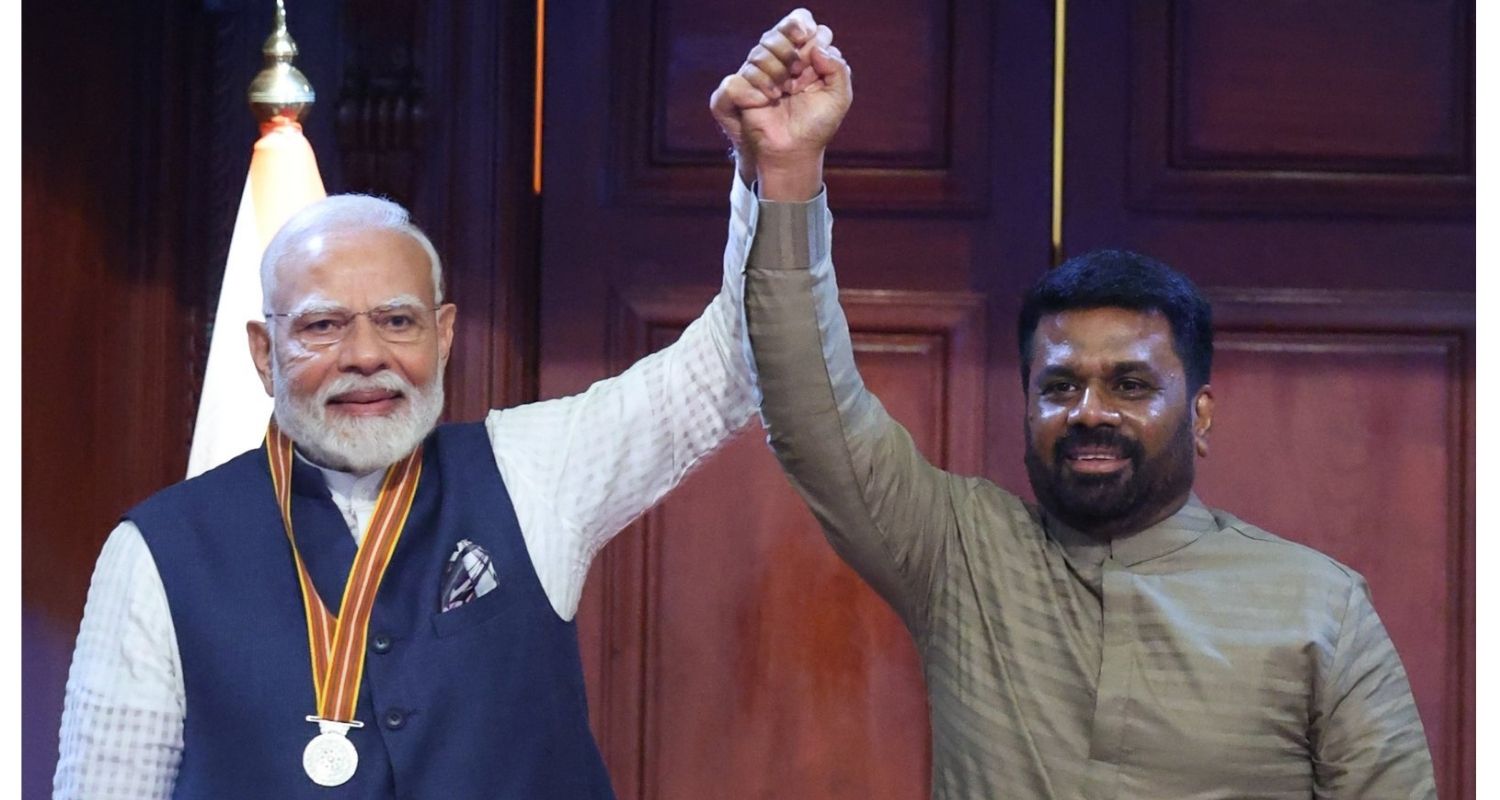Trending:
Building bridges with the island nation
The bonhomie and warmth that marked Modi’s three-day visit to Colombo was something extraordinary and full of symbolism, given the turbulent past. It was a significant milestone in the bilateral relations for reasons that went beyond optics.News Arena Network - Hyderabad - UPDATED: April 9, 2025, 01:40 PM - 2 min read

Sri Lankan President Anura Kumara Dissanayake’s Janatha Vimukthi Peramuna (JVP), a Marxist-Leninist Party, had led an anti-India campaign during 1987-90, even dubbing the neighbouring country as an expansionist power seeking to colonise Sri Lanka.
Over three-and-half decades later, a completely transformed JVP is now part of a coalition government that not only rolled out a red carpet welcome recently to the visiting Indian Prime Minister Narendra Modi but also conferred the country’s highest honour - “Mithra Vibushana”- on him.

For a party that had spearheaded a violent agitation against the Indo-Sri Lanka accord of 1987 and the presence of the Indian Peace keeping Force (IPKF), the change of mind reflects an honest acknowledgement of geopolitical realities of the region and the consistent help that India has been extending to the island nation in its hour of crisis. In fact, after taking over the presidency in September last year, Dissanayake paid his first visit as Head of State to India. He was accorded a guard of honour by the very Indian forces his party once rose up in arms against.
Landmark visit
The bonhomie and warmth that marked Modi’s three-day visit to Colombo was something extraordinary and full of symbolism, given the turbulent past. It was a significant milestone in the bilateral relations for reasons that went beyond optics. A string of agreements, including a comprehensive defence deal, were signed as the two countries reaffirmed their commitment to further deepen the mutual cooperation.
The landmark visit, the first by any foreign dignitary since Dissanayake took over as the President of the island nation, provided an opportunity to clear the air regarding India’s apprehensions over the new regime’s possible shift in foreign policy priorities, given the violent political history of JVP, now a crucial partner in the coalition government.
However, much has changed since the turbulent late 1980s. Dissanayake has transformed himself into a pragmatic leader anchored in leftist ideology and focused on anti-corruption reforms. In fact, Dissanayake’s coalition — National People’s Power (NPP) — was a clear winner in last year’s general elections even in the Tamil-dominated Jaffna Peninsula for the first time since the country’s independence from Britain in 1948. This demonstrates how the promise of economic betterment is far more important for people than the politics of ethnic identity. The fact that Modi was bestowed with the highest award granted to a foreign leader demonstrates an enduring bond between the two countries. It truly marked a new chapter in bilateral relations.
String of agreements
One of the most notable outcomes of the visit is the first-ever comprehensive defence cooperation agreement that includes knowledge exchange programmes, tri-services training, and joint research in defence technology. India already provides specialised training to around 750 Sri Lankan military personnel annually, and both nations frequently engage in joint exercises.
The new agreement formalises this long-standing cooperation, signalling a strategic realignment in the Indian Ocean Region. This enhanced defence cooperation comes against the backdrop of India’s concerns over China’s expansionist military presence in the Indian Ocean Region.
The defence agreement should be seen in the context of geopolitical realities in the Indian Ocean Region (IOR) and also in terms of India’s Neighbourhood First policy. Sri Lanka cannot afford to detach itself from India’s security concerns, given its geographic proximity. Significantly, Colombo has also assured New Delhi that it will not allow its territory to be used in a manner inimical to India’s security interests.
The two sides inked a total of ten agreements covering energy, defence, digital transformation, debt restructuring, and health and medicine. Another major highlight of the visit was the signing of an agreement to connect the electricity grids of India and Sri Lanka, enabling energy trade between the two countries.
This is set to be a game changer for energy security and integration in the region. Further strengthening trilateral cooperation, a strategic agreement between India, Sri Lanka, and the United Arab Emirates was signed to develop Trincomalee as a regional energy hub. This initiative aligns with India’s broader “MAHASAGAR” vision, which seeks to ensure peace, prosperity, and partnership across the Indian Ocean Region.
Sri Lanka and India, separated at one point by just 20 Km of ocean, are ideally placed to usher in this regional transformation via energy, transport, digital and trade connectivity. The Jaffna International Airport, which is being developed with Indian assistance, has also become pivotal to regional connectivity.
Friend in need
Modi’s visit came at a crucial time for Sri Lanka, which is still grappling with the aftershocks of its 2022 economic crisis. In a strong message of regional solidarity, the Prime Minister reaffirmed India’s steadfast commitment to supporting Colombo’s economic recovery.
The current firming up of a debt restructuring agreement demonstrates the fact that India, unlike China, is not keen on a transactional relationship but the one that is based on mutual trust and goodwill.
The United States President Donald Trump’s imposition of a huge tariff on Lankan imports will almost make it impossible for the island nation to achieve targets within the framework of the IMF Extended Fund Facility (EFF) and the stipulated time frame.
Sri Lanka, therefore, needs to seek fresh markets and investments to offset the anticipated drop in income from the US market. India is still the third largest importer of Sri Lankan goods as well as the third biggest lender. It offers a way out in the midst of lower exports to the US.
Sri Lanka already has a Free Trade Agreement (FTA) with India. The terms of trade are very much favourable to Sri Lanka.
